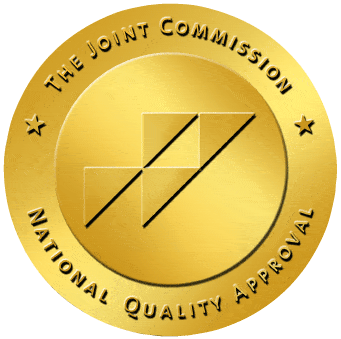Complex PTSD and Addiction

Complex PTSD and Addiction
Table of Contents
Complex post-traumatic stress disorder is a term created a few years back. It is currently considered to be under the branch of PTSD, but it is treated slightly differently. C-PTSD develops after long-term trauma. There are several negative symptoms and long-term effects, associated with C-PTSD.
What is Complex PTSD?
Complex PTSD is very similar to its counterpart, PTSD (post-traumatic stress disorder). PTSD is “an anxiety disorder that results from a traumatic event.”1 Complex PTSD (C-PTSD) is the same thing, but it is from repeated trauma over a period of months or years, rather than just a one-time occurrence.
Other Terms for Complex PTSD
Because C-PTSD is a new term, many doctors still do not use it, and it was debated if it was a form of PTSD or a separate condition. One alternate term for C-PTSD is enduring personality change after a catastrophic experience (EPCACE). Another alternating term is disorders of extreme stress not otherwise specified (DESNOS).2 C-PTSD is also sometimes considered complex trauma.
Differences between PTSD and C-PTSD
PTSD and CPTSD have a lot of similarities. Both are a result of a deeply traumatic experience and result in flashbacks, nightmares, and insomnia.3 Both can lead to someone feeling afraid and unsafe even after the danger is gone.
The biggest difference is PTSD is caused by a single traumatic event, while C-PTSD is caused by long-lasting trauma that repeats itself for months, or even years. Because C-PTSD is caused by long-term trauma, a lot of experts believe that PTSD criteria do not accurately describe C-PTSD’s long-lasting consequences.3
Symptoms of Complex PTSD
There are several symptoms of Complex PTSD, including:
A lack of emotional regulation
Changes in consciousness
Negative self-perception
Difficulty with relationships
Distorted perception of the abuser
A loss of systems of meanings
Symptoms in Children
This kind of trauma is normally brought on by a caregiver, which can cause significant developmental issues. Children might also have emotional flashbacks and relive the trauma. Sometimes, they might hallucinate different aspects of the events. This symptoms can lead to avoidance and increased agitation.
Symptoms in Adults
Adults might experience emotional flashbacks, meaning they feel an intense emotion coming up that developed during traumatic experiences. However, they may not realize that a flashback is occurring. This can lead to frustration and intense emotions. Adults may also experience:
- Uncontrollable feelings
- Feelings of detachment, guilt, and shame
- Strained relationships
- Mistrust of others
- A distorted perception of their abuser
- A loss of beliefs, whether religious or beliefs about the world
The Connection Between PTSD and Addiction
According to Matthew Tull, approximately 46% of people who struggle with lifelong PTSD symptoms also struggle with alcohol or drug use disorder. People with PTSD are also 14 times more likely to develop a substance use disorder (SUD) in their lifetime.3 Most researchers believe that the high correspondence rate between substance use disorder and PTSD victims is because these substances are being used for self-medication.
PTSD can be very difficult for a victim to work through, and an individual struggling with PTSD might turn to drugs or alcohol to escape or numb their symptoms. Research reveals a number of connections between the two disorders. Tull points out that hyperarousal symptoms are related to depressant drugs such as alcohol or marijuana. This reoccurring connection may be because these drugs give an anti-anxiety effect.3 However, there could also be genetic reasons that someone develops PTSD or struggles with substance use disorder.
Causes of Complex PTSD
Scientists have not found the exact reason that Complex PTSD develops. However, they have found that trauma can have lasting effects on the brain’s hippocampus, prefrontal cortex, and amygdala. Research also reveals that any long-term trauma over a period of months or years can cause the development of C-PTSD. This disorder tends to appear in people who have been abused by a caregiver or protector. Some other causes include experiencing ongoing abuse, being a prisoner of war, living in an area of war for an extended time, and experiencing ongoing childhood neglect.
How Is Complex PTSD Diagnosed?
Normally, the Diagnostic and Statistical Manual of Mental Disorders (DSM-5) would be used to diagnose this disorder. However, the DSM-5 does not recognize C-PTSD at this moment. Normally, a person shows symptoms of post-traumatic stress disorder. A doctor might be more inclined to diagnose someone with Complex PTSD if the trauma they experienced happening over an elongated period.4
Misdiagnosis of Complex PTSD
Even with new research coming out about C-PTSD, this disorder is commonly misdiagnosed. It is beneficial to clarify the differences between complex PTSD and some of its mental health counterparts.
Complex PTSD vs. Borderline Personality Disorder
Borderline Personality Disorder (BPD) has very similar symptoms to C-PTSD. BPD is a disorder that affects people differently. The main symptoms include:
- Emotional instability
- Erratic behavior patterns
- Intense feelings of emptiness5
Complex PTSD is a disorder rooted in shame. Normally, it is characterized by flashbacks to traumatic events and intense feelings of fear, sadness, shame, and worthlessness.5
BPD and C-PTSD are not fully understood. BPD is connected to a history of trauma or neglect as well, though there could also be a genetic link. However, Complex PTSD is developed through long-term exposure to trauma. These two disorders can be confused with one another because of their overlapping symptoms and causes, but they do differ slightly.
For example, individuals with either disorder tend to struggle with interpersonal skills. However, this symptom occurs with BPD because there is a fear of abandonment. Individuals with C-PTSD struggle with relationships because they feel they are unlovable or broken. Overall, BPD is primarily made up of fear as the root cause, while C-PTSD may have shame as the root cause.5
Complex PTSD vs. Traumatic Grief
Traumatic grief, otherwise known as complicated bereavement, happens when the loss of a loved one affects someone for a prolonged period. This disorder can have similar effects to C-PTSD.
The most common symptoms of complicated bereavement include:
A persistent focus on the loss
Intense longing
Feeling that life is meaningless
Replaying aspects of death in mind
Intense attachment or rejection of reminders
Bitterness or anger at the world6
While both disorders can heavily impact one’s life, C-PTSD is more focused on shame, while traumatic grief is focused on the loss of a loved one.
Treatments for Complex PTSD and SUD
It is vital to seek treatment for co-occurring complex post-traumatic stress disorder and substance use disorder. There are several different types of treatment options that someone can pursue.
EMDR
Eye Movement Desensitization and Reprocessing therapy (EMDR) “is an interactive psychotherapy technique used to relieve psychological stress.7 During these sessions, the therapist has the patient relive traumatic experiences while directing the patient’s eye movements. This kind of therapy allows a person to be exposed to memories without having a strong psychological response.7
Trauma Recovery Model
The trauma recovery model was originally intended to help children work through C-PTSD. There are four levels of the trauma recovery model.
The first level is based on the fact that every person is redeemable. The second level follows Maslow’s hierarchy of needs, making sure that every person has support. The third level involves staff members working with young people to build strong relationships. Finally, once those bridges are built, the young people can engage with and disclose current or historical trauma.8
Trauma-Informed Care
Trauma-informed care is a psychological approach that assumes an individual most likely has a history of trauma. This approach focuses on respecting and responding appropriately to trauma’s effects. Instead of asking, “What is wrong with this person?” they will ask “What has happened to this person?.”9 The goal of trauma-informed care is to provide any necessary services to support the patient and to avoid triggering the patient.
Cognitive Behavioral Therapy
Cognitive-behavioral- therapy (CBT) is a psychotherapeutic treatment that helps patients learn how to identify and change destructive thought patterns that have a negative influence on their emotions or behaviors.10 CBT focuses on triggers and flashbacks or the persistent feeling of shame that occurs with Complex PTSD. CBT replaces these negative reactions with positive ones and beneficial coping methods.
Exposure Therapy
The goal of exposure therapy is to help people confront their fears. People tend to avoid things when they are afraid of them. During exposure therapy, psychologists create a safe environment to help “expose” individuals to the things they are afraid of. Over time, exposure reduces fear and decreases avoidance.
If you or a loved one are struggling with complex PTSD or elongated trauma, it might be best to seek help from a therapist. At worst, therapy gives you someone to talk about the difficulties in life. C-PTSD is serious, and it should be taken as such. Treatment is available. If you or a loved one are struggling with substance use disorder, please seek medical attention as well. There are many ways to start your recovery journey.
Resources
- https://www.healthline.com/health/cptsd#_noHeaderPrefixedContent
- https://www.mind.org.uk/information-support/types-of-mental-health-problems/post-traumatic-stress-disorder-ptsd-and-complex-ptsd/complex-ptsd/
- https://www.verywellmind.com/what-is-complex-ptsd-2797491
- https://pubmed.ncbi.nlm.nih.gov/29577450/
- https://www.psychologytoday.com/us/blog/understanding-ptsd/202006/is-it-bpd-or-cptsd
- https://www.socialworker.com/feature-articles/clinical-intersections/grief-trauma-and-complex-trauma-5-questions-answers-social-workers/
- https://www.healthline.com/health/emdr-therapy
- https://psychologymindpalace.wordpress.com/2017/12/07/trauma-recovery-model/
- https://socialwork.buffalo.edu/social-research/institutes-centers/institute-on-trauma-and-trauma-informed-care/what-is-trauma-informed-care.html
- https://www.verywellmind.com/what-is-cognitive-behavior-therapy-2795747














